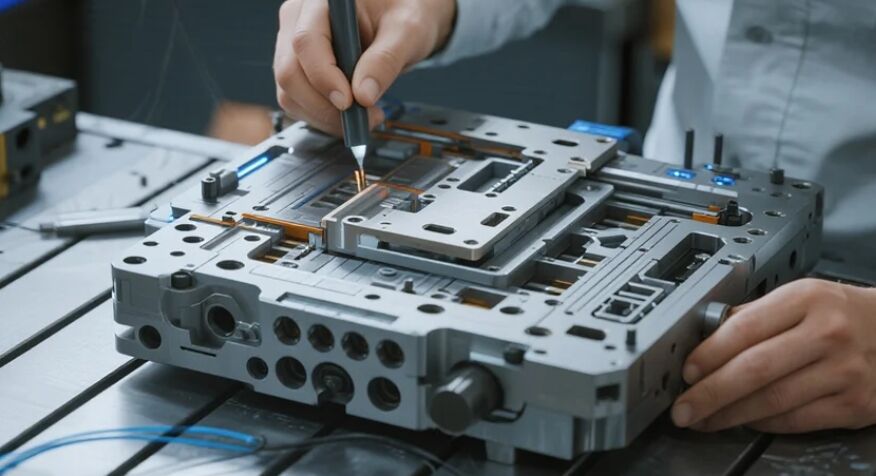Gusali 49, Fumin Industrial Park, Pinghu Village, Distrito ng Longgang
Sunday Closed
Ang pagsubok na pangkabuhayan ay nangangailangan ng mga prototype na tumpak na nagmumula sa pag-uugali ng tunay na bahagi sa ilalim ng mga tunay na kondisyon. Cnc machining nagbibigay ng isang mapagkakatiwalaang solusyon para sa paggawa ng mga prototype na may mataas na katiyakan sa pamamagitan ng paggamit ng mga materyales na panghuling produksyon. Nilalapat ng pagsusuri na ito ang paghahambing sa pagitan ng CNC at iba pang mga pamamaraan (3D printing, paghuhulma ng urethane) batay sa katiyakan, tagal ng produksyon, katangian ng materyales, at gastos. Nakumpirma ng datos ng pagsusulit na ang mga prototype ng CNC ay nakakamit ang ±0.05mm na dimensional accuracy at mga katangian ng materyales na nasa loob ng 5% ng produksyon-grade na mga metal/plastik. Nagpapakita ang mga kaso ng matagumpay na pagpapatunay ng mga bahaging nakakatulong sa pagdadala ng beban sa aerospace at mga medikal na kagamitan. Sinusuportahan ng mga resulta ang paggamit ng CNC prototyping bilang mahalaga para sa pagpapatunay ng pag-andar kung saan ang integridad ng materyales at katiyakan ay hindi maaring ikompromiso.
Ang functional testing ay nag-uugnay sa design validation at mass production. Habang lumalaki ang product complexity noong 2025, ang pag-simulate ng real-world performance ay nangangailangan ng mga prototype na hindi makikilala mula sa mga tunay na bahagi. Ang mga tradisyunal na 3D-printed prototypes ay madalas nabibigo sa ilalim ng mekanikal/termal na stress dahil sa anisotropic properties. Ang CNC machining ay nakakapuna sa puwang na ito sa pamamagitan ng pagpapahintulot sa mga prototype mula sa production-grade materials (hal., 6061-T6 aluminum, PEEK). Ito pag-aaral ay nagsusukat ng epekto ng CNC prototyping para sa functional verification sa pamamagitan ng comparative metrics at industrial applications.
Lumikha ng limang test components gamit ang:
Cnc machining : 3-axis & 5-axis mills (Haas VF-2, DMG MORI)
Additive Manufacturing : SLS (Nylon PA12), SLA (Somos Taurus)
Urethane Casting : Smooth-Cast 300
Katumpakan ng Sukat : CMM measurements (Mitutoyo Crysta-Apex)
Kagampanan ng Materyales : Mga pagsubok sa Tensile (Instron 5967), thermal cycling (-40°C hanggang 120°C)
Functional na Pagsubok : Tumagal sa karga (hydraulic press), mga cycle ng pagkapagod
Talaan 1: Pagkumpara ng Paraan ng Prototyping
| Paraan | Avg. Dimensional Error (mm) | Lakas ng Tensile kumpara sa Target | Oras ng paghahatid (araw) |
|---|---|---|---|
| Cnc machining | ±0.05 | 98-102% | 3-7 |
| Sls 3d printing | ±0.15 | 78-85% | 1-3 |
| Urethane Casting | ±0.20 | 90-95% | 5-10 |
Ang mga CNC prototype ay nagpanatili ng dimensional stability na ±0.05mm pagkatapos ng thermal stress testing – na mas mahusay kaysa SLS (pagbabago hanggang 0.3mm) at urethane (0.45mm).

Aerospace Bracket (Al 7075-T6) : Ang mga prototype ng CNC ay nakatiis ng 15,000 cycles ng pagkapagod sa 120% operational load; nabigo ang mga bahagi ng SLS sa 3,200 cycles.
Medical Implant (Ti-6Al-4V) : Ang mga bahagi na gawa sa CNC ay pumasa sa mga pagsusuri sa biocompatibility at pagsusuot, samantalang ang cast urethane ay nagpakita ng pagkawala ng mga particle.
Pagganap na Pinamamahalaan ng Materyales : Ang paggamit ng isotropic na metal/engineering plastic ng CNC ay nagpapahintulot sa predictive failure analysis. Ang anisotropy sa mga bahagi ng SLS ay lumilikha ng stress concentrations na hindi matuklasan sa CAD.
Limitasyon : Mas mataas na paunang gastos kumpara sa 3D printing (nakaaabot ng +35%) kaya hindi gaanong angkop ang CNC para sa mga visual prototype na hindi kritikal. May geometric constraints para sa mga internal channel na may diameter na <0.8mm.
Mga Implikasyon sa Industriya : Ang CNC prototyping ay nagbawas ng 40-60% sa tooling rework para sa automotive/aerospace na aplikasyon. Ginagamit ito ng mga developer ng medical device para sa mga prototype na kailangan sa FDA submission na may requirement sa material traceability.
Ang CNC machining ay nagbibigay ng di-maikakailang katiyakan (±0.05mm) at katapatan sa materyales para sa functional prototypes. Ang kakayahan nito na prosesuhin ang end-use na mga metal at thermoplastics ay nagbibigay ng maaasahang simulasyon ng mekanikal, thermal, at kemikal na pagganap. Inirerekomenda para sa:
Mga kritikal na load-bearing na bahagi
Mga industriya na nakadepende sa regulasyon (medikal, automotive)
Validasyon ng mataas na dami ng produksyon
Dapat pag-aralan sa hinaharap ang mga hybrid na pamamaraan (hal., CNC + DED) para sa mga kumplikadong panloob na geometry.
Karahasan sa Pag-aari © Shenzhen Perfect Precision Products Co., Ltd. Lahat ng Karapatang Rezervado — Patakaran sa Pagkapribado—Blog